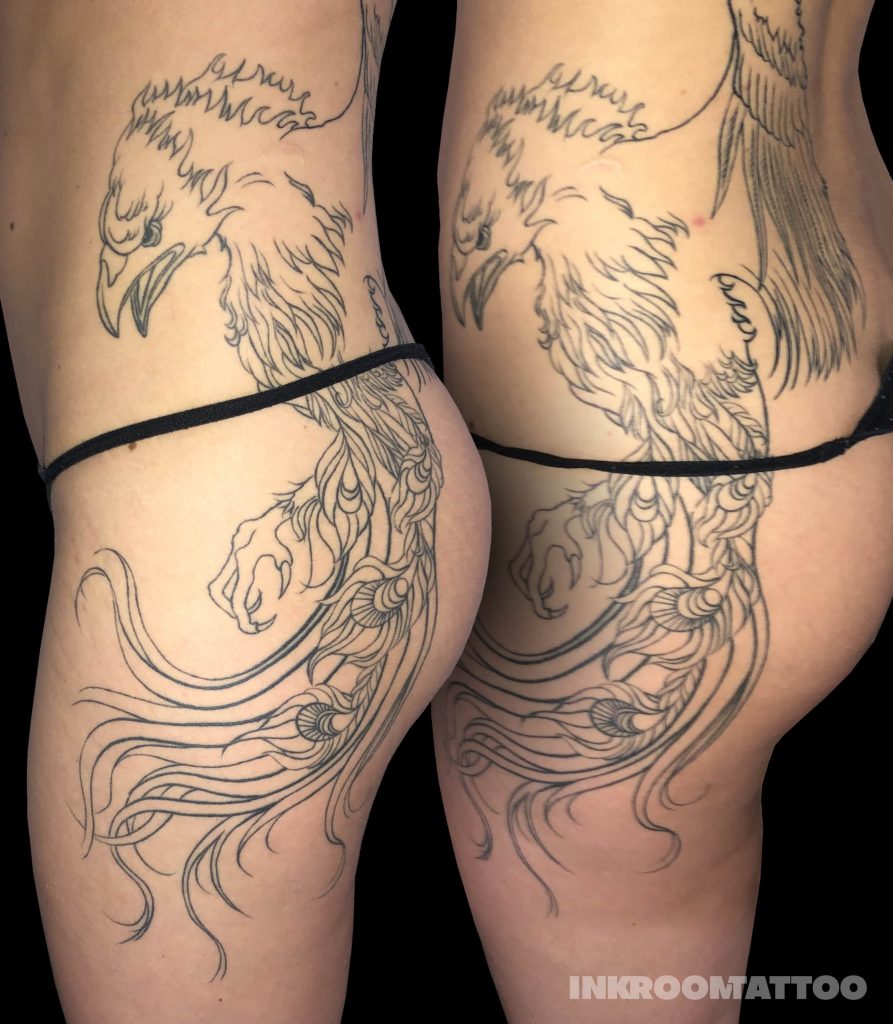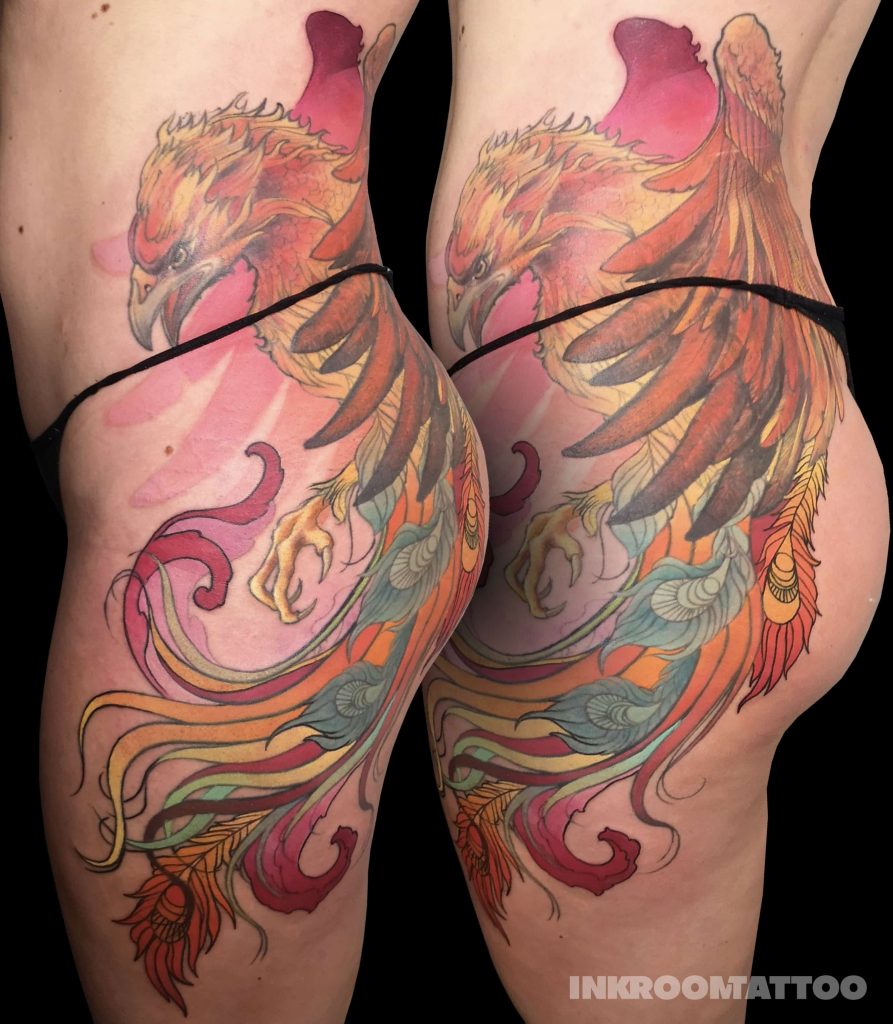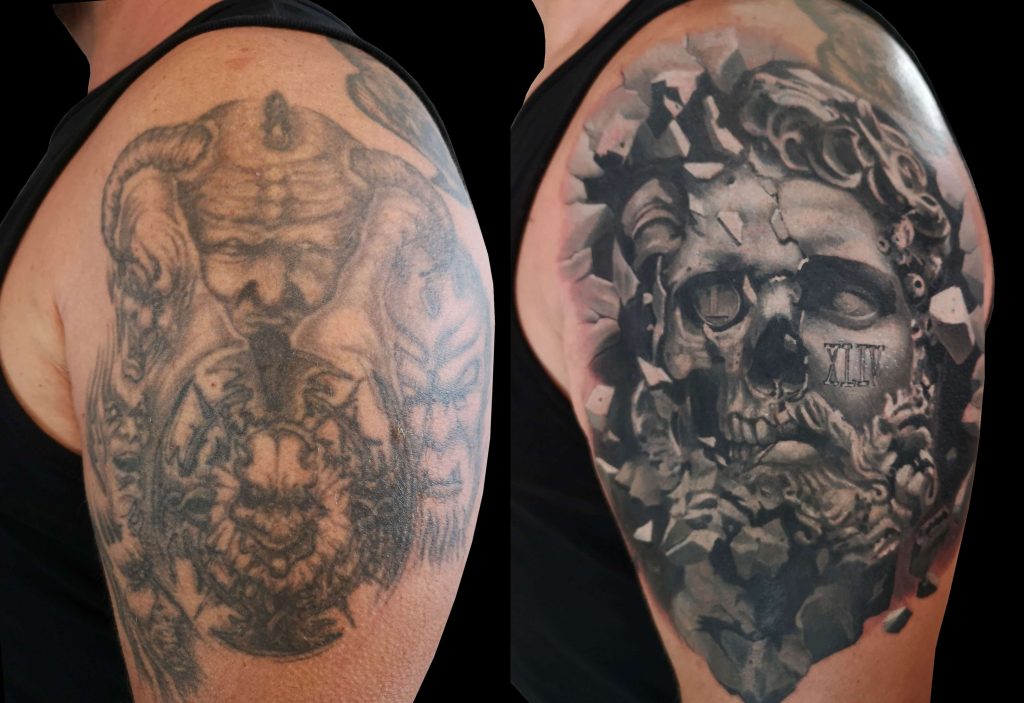Why Do Bad Tattoos Happen?
In the past, the tattoo industry didn’t have the technical background or tools it does today. Equipment and inks were of much lower quality.
But why is this still such a common issue even now?
Nowadays, many people want to become tattoo artists—which makes sense, since more and more people want ink on their skin. However, not everyone is cut out for this profession. Solid drawing skills are essential, and their lack often leads to poor results. Some people rush into getting a tattoo without thinking it through. Others regret their design shortly after getting it. That’s why we always recommend sleeping on the idea before going under the needle.
Many beginners start practicing at home and unintentionally pick up bad habits—especially in hygiene or technique. This can lead to infected tattoos or simply poor-quality results: uneven lines, bad shading, or patchy color.
If you want to cover or correct an existing tattoo, look for an artist who can offer thoughtful suggestions and realistic advice about what’s possible.
If possible, don’t try to save money when it comes to a cover-up or correction. Choose a clean, professional studio where hygiene is a top priority. Some basic indicators:
All equipment and surfaces are covered in protective film,
The artist wears clean gloves,
The skin is properly disinfected,
The work area is free of ink splatters and stains.
Over time, our bodies change. A once-beautiful tattoo can become distorted or faded. That’s why many people choose to get an old tattoo refreshed, covered up, or even removed with a laser.


In some cases, a small fix may be all that’s needed—like redoing the outlines, refreshing the colors, or deepening the shading. These are usually the simplest solutions for both artist and client.
But in more difficult cases, where a bad tattoo needs to be turned into something beautiful, it’s important to work with a skilled and creative artist. Covering up an old design isn’t always easy. It’s generally easier to cover a faded, lighter tattoo than a dark one. The tattoo’s location also matters—certain areas are more flexible for cover-ups than others. Keep in mind: you can’t cover a black tattoo with light colors—only darker or black ink will work. In most cases, the new tattoo will end up larger than the original.
If the tattoo is too dark or complex to cover, we recommend visiting a studio that offers laser tattoo removal. Be prepared: it can be just as painful as getting a tattoo.
This treatment uses Q-switched lasers to break down the pigment particles in your skin, which are then naturally absorbed by the body. The laser only targets the ink—not the skin—so it doesn’t leave scars. Darker pigments break down faster and more easily than lighter ones.
If your skin is sensitive, local anesthetic can be applied. Depending on the size of the tattoo, a session can last from 15 to 60 minutes. Older and lighter tattoos usually require more sessions to fade. Multicolored designs often take 8–10 sessions, spaced 4–6 weeks apart. For best results, the tattoo should be less than 3 years old and primarily dark or black.
Think carefully about what you want to wear on your skin for a lifetime— and always choose an experienced, professional, and meticulous tattoo artist!


